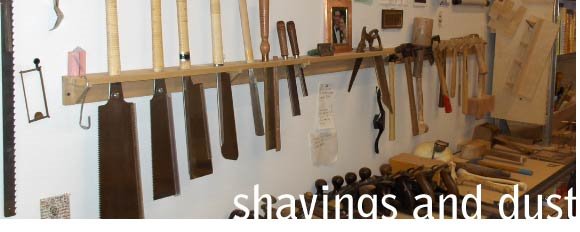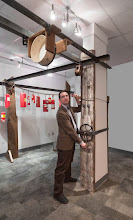-The Manga Museum in Kyoto. Holy crap there is a lot of manga in there. And a lot of people reading it. Pretty beautiful to have a museum in which the exhibits are expected to be picked up and read and touched. Great idea.
-Propping up trees. Though I may write about that in a later post. Those of you that know me know I am going to love any country that loves trees enough to prop up endangered branches with wood supports and lash the branches on them to make sure they are secure. More about that later, probably.
-Paper stores. More about this later too, probably. Lordy they are beautiful, though. Holy cow. Oh, okay, just two photos of a paper store a few blocks from here, mostly for my mom and for Eck Follen, because I thought of you both immediately when I walked in.
 |
| Each box contains a different type of paper. Made me think of Ollivander's in Harry Potter. Except with paper. This is less than half of the boxes, I could not get a good photo. |
 | |
| Just a bunch of handmade paper folded up on a table. |
What I want to write about is accidentally finding Hitomi Kensetsu, a timber-frame building company, and meeting the president Hitomi Akira, an incredibly gracious man of sixty or so, bald with a fringe of hair and the kind of creased brow that I see on a lot of small business owners.
As we were walking the city, I noticed this saw in the window of a store front. It is a lumbering saw, the kind used to cut boards out of a tree, and is not something one runs into much outside of Japan, except in a museum. We went in and asked about it, and quickly found out that no one in the office had very much English at all. Luckily my colleague has a bit of Japanese, and we were able to explain ourselves, and through pantomime were able to have a pretty exciting conversation about woodworking.
He was clearly excited to be talking to people that were excited about what he did and how he did it, and we had a high old time in the front of his store. Then we noticed the jointery samples.
If you are geeky about wood and making things with it, you are familiar with Hideo Sato's "The Complete Japanese Jointery." It is a lovely book, and has beautiful images of incredibly complicated and mind-blowing joints that are used in traditional Japanese wooden structures. Every different combination of beams and columns in a traditional structure has a different type of joint, and many of them are named in ways that indicate that this particular joint is the only appropriate one for this particular application. Further, it is only appropriate in that application and would be used nowhere else. So the soe ita tsugi or "double shear end joint of kobari beam,"would never be used for the dosashi beam. Obviously, that has its own joint that is made differently based on the forces that are applied to it.
This all seems pretty esoteric to those of us raised in a culture defined by pioneers who were trying to get log cabins built fast enough that their families would survive the winter.
This is not to say that there is not shoddy construction all over the world. And David Pye reminds us that the definition of "workmanship" is contextual. It would not have been appropriate for Thomas Lincoln to have spent two days making a single joint for the rafter of the log cabin he built. If he had, his son would have perished of cold and we would not have had a 16th president.
But this book of joints is real wood porn for those of us so inclined, and it is a book you see on the shelf of a lot of people who work with wood in some capacity. And Hitomi Kensetsu works with a lot of wood.
This was one of those moments that happen occasionally in my life, when an abstract idea suddenly and forcefully takes corporeal form. It would be a little like shaking hands not with Harrison Ford, but with Indiana Jones. Because sitting there on the table in Hitomi-san's office were joint samples of these very real joints.
Holy shit.
As I tried to figure out how to respectfully ask if I could play with his toys, he lifted one and took it apart to show us. It was an incredibly clever joint that only comes apart one way, meaning that as the building puts stress on it in any other direction it only gets tighter and more strong. He lifted up sample after sample, and we took them apart. With pantomime he showed us how they went together and how as the weight of the building sat on the different members of the joints they did their job.
The joints were so carefully cut, with crisp, straight edges and dead flat sides and bottoms, that they slotted together perfectly and came apart smoothly when the pins were removed. It really was stunning. And all hand-cut, if you looked closely enough you could see the chisel marks as the mortices were chopped, and there was the occasional remaining mark from a marking gauge. Hitomi-san had clearly never had anyone that he was not building a structure for care at all about the beauty of the work his company did, at least not like this. He thought we were a little weird, I think, but he delighted in showing us all of his stuff.
My colleague had enough Japanese to ask if we could bring our students to show them, and he graciously agreed. I am excited to go back, and excited to show the students. This is a glimpse into the building trades that flat out would not be possible in the US. And it is actually a chance to have an important discussion, not just about engineering (though that is clearly part of the discussion), but about attention to detail and the æsthetics of function.
We have all heard "form follows function," and I don't disagree with that, of course. But I really think that they are more intertwined than that, and that in an ideal world function is form, that beauty is one with functionality, rather than one following the other. Frank Lloyd Wright thought that, and he got it form studying Japanese architecture.
Here are some seriously geeky photos of wood joints:
 |
| This... |
 |
| Looks like this when it is disassembled. |
 |
| This is a joint for attaching a horizontal beam to a column. Beautiful. |




2 comments:
Holy Cow! Talk about elevating craftsmanship to art.
Holy Cow! Talk about elevating craftsmanship to art.
Post a Comment